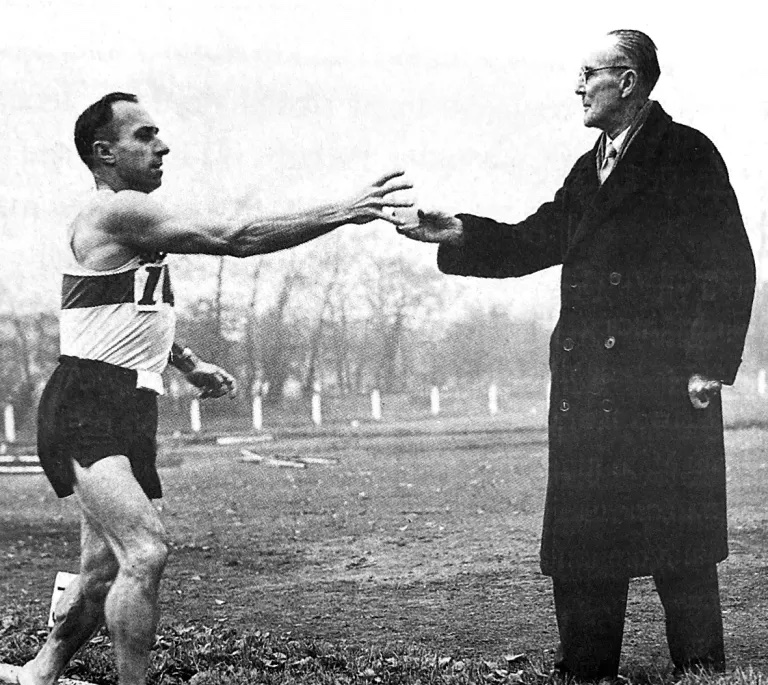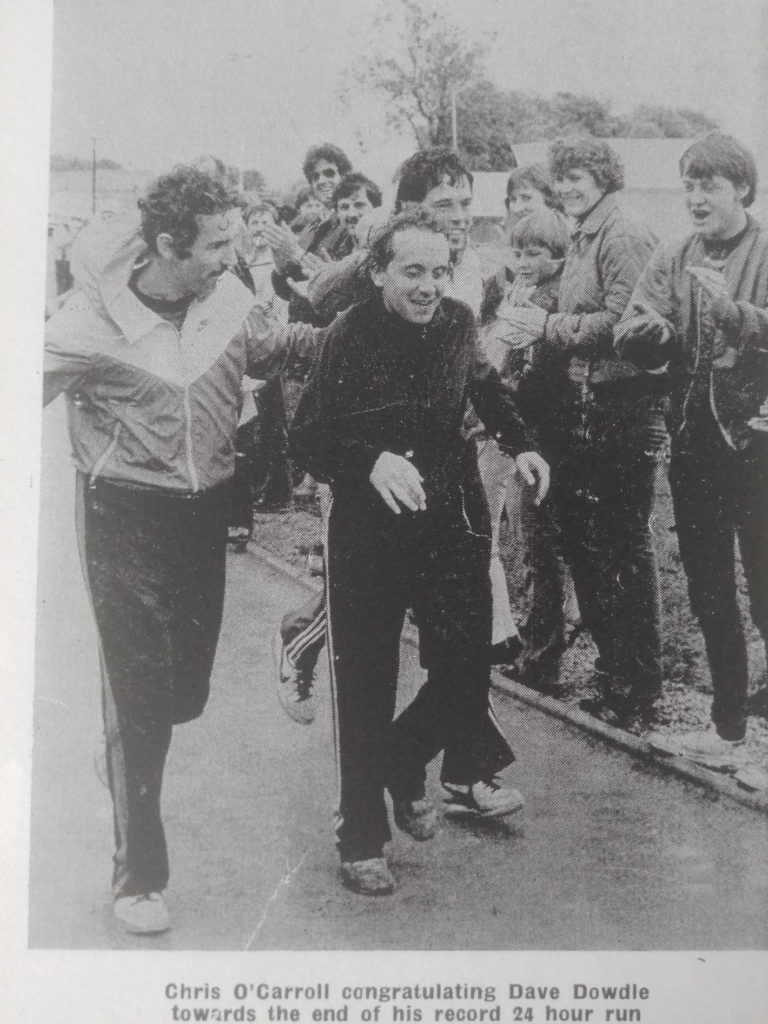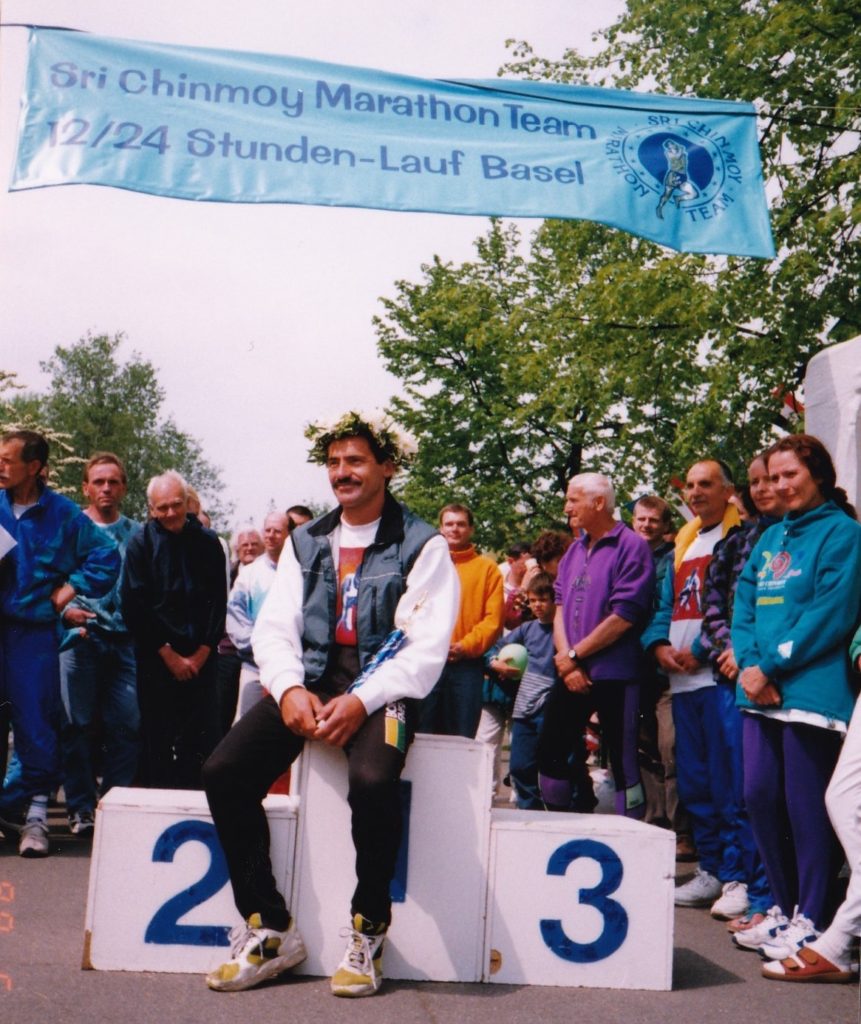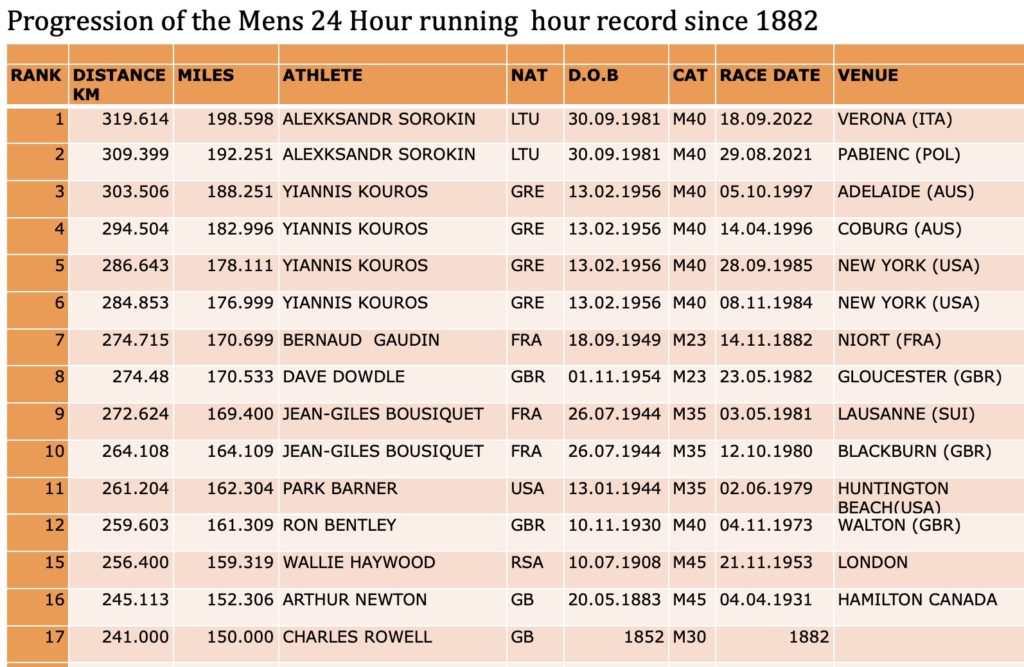Progression of the Mens 24 hour record
Aleksandr Sorokin’s recent raising of the men’s 24 hour record to just below 200 miles at 319.614 km set me looking at the history of the 24 hour record.
In this post we look at how the 24 hour record has evolved over the last 70 years. The evolution of the men’s 24 hour running record.
Early attempts at 24 hours
The first credible recorded 24 hour was by one of the great pedestrians of the late 19th century, Charles Rowell. The pedestrians took part in staged indoor 6 day races, mixing walking and running to cover vast distances. Rowell himself is credited with covering over 530 miles in one such 6 day race. In a six day race in 1882 he is credited with covering 150 miles in the first 24 hours of the event. the first time the 150 mile 241.401 km barrier was broken.
50 years later
We then have to go forward to 1931 when the legendary Arthur Newton achieved a distance of 152,306 miles /245.113 km. The five times Comrades marathon winner ran that on an indoor track in Ontario Canada.
Wally Haywood 1953
Fast forward another 20 years to November 1953 and Newton was instrumental with the Road Runners Club in staging a 24 hour race at Motspur Park cinder track in Surrey. South African Wally Haywood, another multiple Comrades winner, became the first runner to go over the 250km barrier setting a new mens 24 hour record of 256.400 km/159.319 miles.

He is being handed a drink by Arthur Newton the previous record holder Pic Road Runners Club
Ron Bentley 1973
The UK Road Runners Club organised several 100mile or 24 track races throughout this time. In 1973, Ron Bentley from the famous Tipton Harriers club, ran 259.603 km just missing 260km but going through the imperial 160 mile mark for the first time. Like Haywood’s record this was run on a cinder track at Walton on Thames, London.
1979-1982 Resurgence in interest in 24 hour racing
Through the late 1970’s and early 1980’s there was a resurgence in 100 mile and 24 hours races being staged. The UK still had annual events which were being replicated in Europe and the USA.
Whereas the record had been broken with long gaps of often 20 years between them, over the next 3 years the record would be broken on five occasions.
The USA was the venue for the next improvement in the record on 2nd June 1979. American Park Barner added just over a mile to Bentley’s mark to break 260km and record 162.309 miles /261.204 km. Barner was one of the most prominent American ultra runners of the time and like most of the previous record breakers just loved running. Their refreshing attitude is summed up in Barners comment in one interview “I still don’t feel like I’m number one. I feel the same way I did when I started running seriously in 1968. I try not to let anything affect me. I don’t need trophies or wins or anything. It’s something I enjoy doing. It makes me feel good. I sort of feel like a kid.”
The French Connection and a record breaking Brit
It was back to Europe and an emerging French ultra runner Jean-Giles Bousequet improved the record twice in the space of 8 months. Blackburn in the north of England was the venue for an event October 1980 where the Frenchman pushed the record out to 264.108 km /164.109 miles.
Obviously getting to grips with the rigours of the event the following May he took up the 24 hour challenge again. In an event in Lausanne, Switzerland he added a further 8km/5 miles to become the first runner to record 270 km finishing with 272.624 km /169.400 miles.
Great Britain’s Dave Dowdle sets a new 24 hour record
24 hour races were spreading. In the West of England the local Gloucester Athletic Club had a group of very competent ultra runners, and riding the wave, organised an event at their local track on 23 May 1982. Several of them took part. Martin Daykin, one of the top European 100km runners of the time was favourite, but it was his compatriot Dave Dowdle who prevailed and broke 170 miles for the first time recording 274.480 Km/170.553 miles. A distance which is still the British record.
Dowdle’s World glory was only to last until the Autumn when the record returned to France. On 14 November 1982 Bernard Gaudin broke it by a whisker adding a further 143 metres to finish with 274.715 km/170.699 miles.

You can read more about Dave Dowdle and Gloucester AC’s ultra exploits of the time HERE
The Kouros Era
In 1983 an unknown Greek, Yiannis Kouros, astounded the ultra world by winning the famous Spartathlon race in emphatic fashion. A feat he repeated the following year 1984 when covering the 245 km course in a record time 20.25 minutes. The course in Greece includes mountain sections and temperatures can be warm. Speculation started amongst ultra runners on what Kouros could achieve in a flat 24 hour race.
They didn’t have to wait long for 8 weeks later on 9 November 1984 he was on the start line in New York of the Sri Chinmoy 24 Hour race. The rest is ultra history. He improved the record by 10km taking it to 284.853 km /176.999 miles.
Kouros improves the mens 24 hour record on 4 occasions
Over the next few years he would go on to record 14 of the best mens 24 hour record times ever. He would break the world record on a four further occasions pushing it up to the first 300k effort when recording 303.506 km/188 589 miles. He made the 24 hour distance his own and many felt that the 303km would last for many years.

Over the next 20 years only two runners would record over 280 km, the Russian Dennis Zalybyn with 282.282 km in 2006 and the Japanese Yoshikazo Hara with 285.366 km in 2014.
The 303 km seemed way out of reach for any current runner.
And then….Aleksandr Sorokin
Sorokin’s progress is recorded in my other blog which you can read HERE
From 2015 when he ran his first 24 hour event in Turin and recorded 242.189 km he had increased this incrementally to 278.972km in winning the World title in Albi, France.
Two years later in August 2021, post lockdown, he took part in the Ultra Park 24 hour in Pabience in Poland. He improved his own PB and mens 24 hour world record by a huge 30km /18 miles to take Kouros’s mens 24 hour world record. He improved it by 6km to record 309.399Km /192.251 miles.
It was a huge improvement, not only on his own personal best, but by comfortably surpassing Kouros’s mark.

Compiled by Adrian Stott with help from Andy Milroy.
Another year another improvement in the mens 24 hour record
Not content to sit on his laurels, another year later and he has just increased this by a further 10km to 319.614 km 198.598Miles and narrowly missed the 200 mile barrier.
So why the big improvements
In the last 20 years and in a digital era there is much more knowledge of and sharing of training information.
There have also been huge advances in nutrition studies in extreme endurance events, making people much better prepared.
It is worth pointing out although Sorokin is at the head of the pack, in Verona, Andrej Piotwroski became the third runner to surpass 300km when finishing second to Sorokin with 301.859 km, the fourth best ever distance and the Italian Marco Visintini, 3rd at Verona, ran 288.438 km to move to 5th all time. Both, along with Sorokin of course, recording new National Records. Further down the field many other PB’s and national records were also set, indicating there is a buzz around 24 hours at the moment and it is an event in its own right being taken seriously and to new boundaries again.
Super shoes a factor?
Of course conversations have been made about super shoes which most of the leading runners, including Sorokin, are wearing. All the athletes achieving improvements at world level , mens and women seem to be wearing a version of the latest shoes. They would say,and it is true, that they train very hard to make improvements, so their effort is being rewarded .
If the 3-4% alleged improvement in performance with these shoes is knocking a few minutes off an elite marathon runners time, then multiply that over a 24 hour period of steady state endurance effort and go figure if the shoes could be a factor?